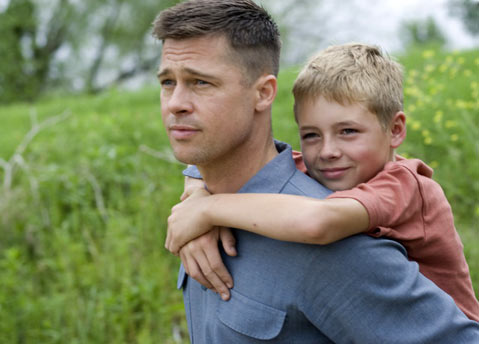The Tree of Life
Brad Pitt, Jessica Chastain, and Sean Penn star in a film written and directed by Terrence Malick.

Among its many virtues, Terrence Malick’s stunning and adventurous new film is blissfully resistant to easy description and the age-old comparison game—even to the visionary director’s own filmography. Subject- and story-wise, The Tree of Life traverses such areas as adolescent coming-of-age in late-’50s small-town Texas, the vivid dream states of childhood memory, the lingering pain of family tragedy, and the endless anguish and balm of spiritual questioning. Time-space-wise, Malick gives his film an unusually free-range license, moving between the ’50s to slick urbanity of Houston high-rises in the 2010s, and, most atypically for any Hollywood film, off into outer and inner space, with a brief detour into prehistoric life. As for that trippy aspect of the film, fans will claim cosmic epiphany where detractors may cry mystical hooey.
Suffice to say that I’m a rabid Malick fan and have been since Badlands. He’s done it again, and in surprising new directions. It’s not nearly enough to say that the film is about a stern, tough-love father (Brad Pitt, in what is probably his finest performance to date) and the ripples of emotional perturbation in a Texan family. Lesser-known and radiantly expressive, Jessica Chastain plays the mother, a much more compassionate and playful parental figure, whose metaphysical interior monologue makes up part of the film’s interior life, from its stage-setting opening. At the epicenter of the more linear passage of the film is the volatile, emotionally evolving teenager (played with minimalist panache by Hunter McCracken), whom we seem to track both as a real-time character and through the filter of memory.
It may be time to anoint Malick as the great American filmmaker, partly by virtue of the fact that every one of his films has been of a high and distinctive order. We can see, with this stellar handful of great movies, how each one is singular and also how they add up to a patchwork of American life and experience, from crime/escape (Badlands, Days of Heaven) to poetically lined wartime angst (The Thin Red Line) to our nation’s ambivalent beginnings (The New World) and, with The Tree of Life, to a sweeping, fragmented yet cohesive canvas about existence and the director’s own childhood in Waco. With his latest, Malick is still batting a thousand.



